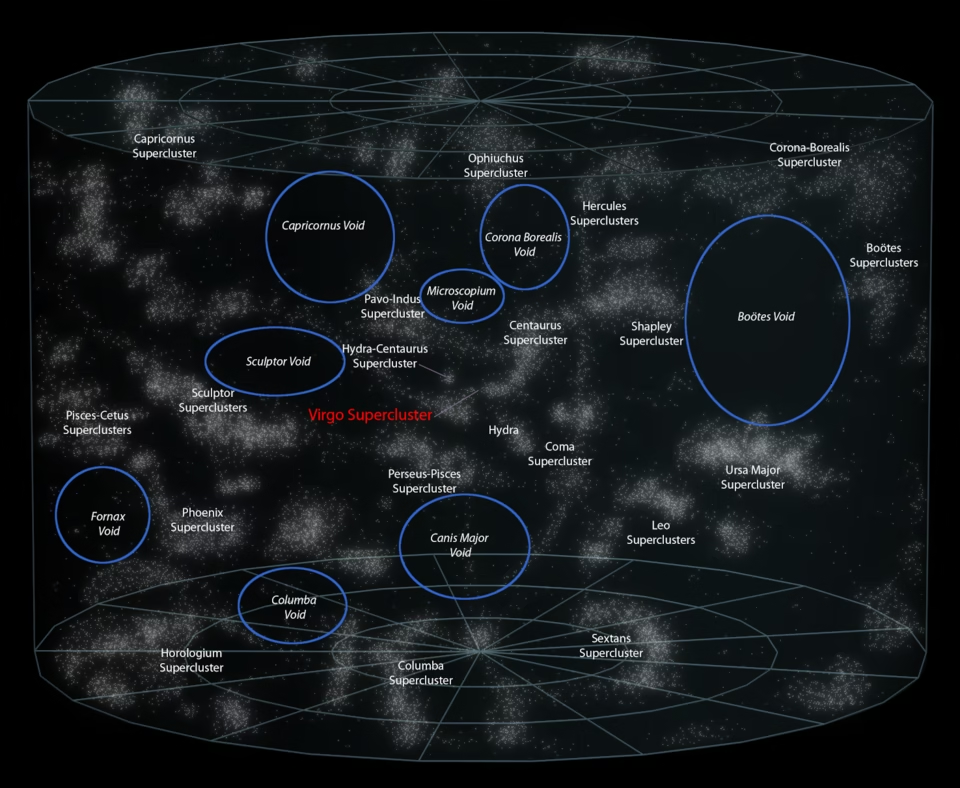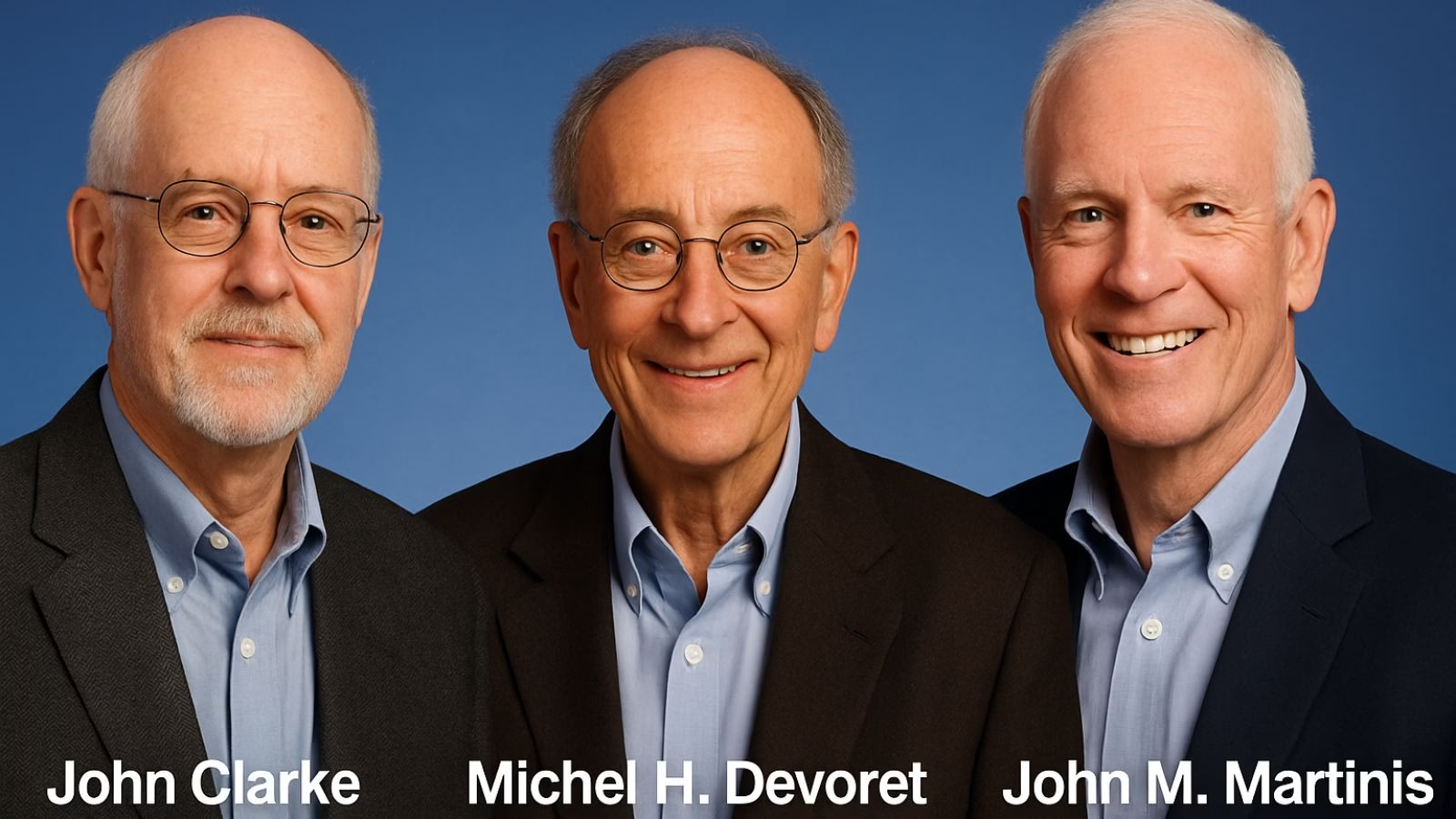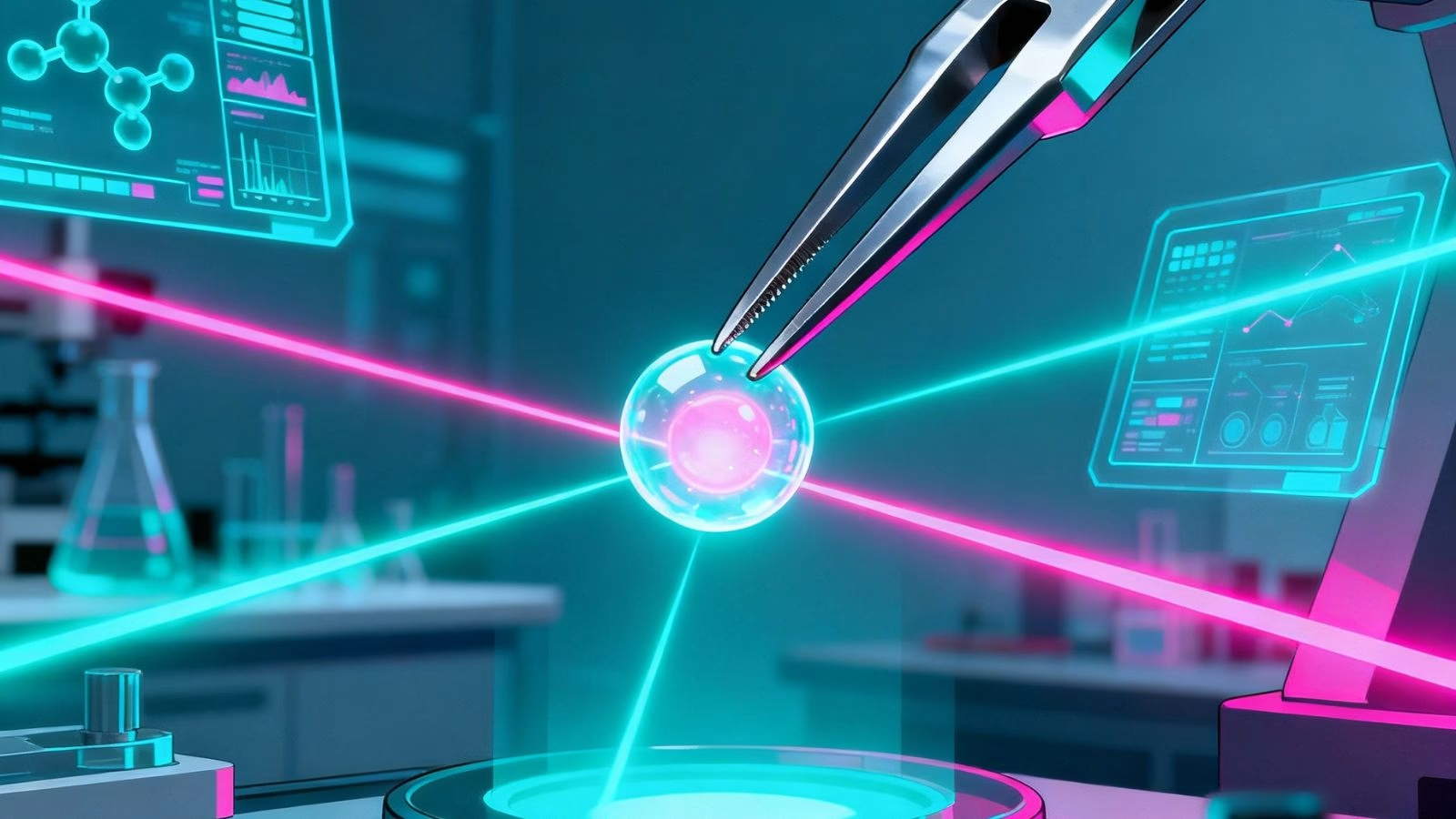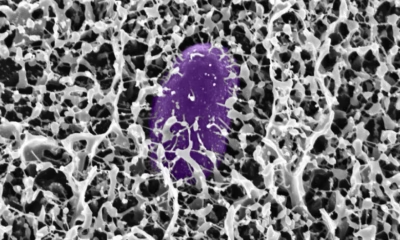Space & Physics
Could dark energy be a trick played by time?
David Wiltshire, a cosmologist at New Zealand’s University of Canterbury, proposed an alternate model that gets rid of dark energy entirely. But in doing so, it sacrifices an assumption cosmologists had held sacred for decades.

In 1924, American astronomer Edwin Hubble discovered that our universe expands in all directions. Powering this expansion was a Big Bang, an event that marked the birth of our current universe some 13.7 billion years ago. Back then, the finding came as a jolt to the astronomy community and the whole world. In 1998, there was even further shake-up when observations of type 1A supernovae from distant galaxies indicated the universe was expanding – at an accelerated rate. But the source of its driving force have remained in the dark.
Dark energy was born from efforts to explain the accelerated expansion. It remains a placeholder name for an undetected energy density contribution that offers a repulsive effect counterbalancing gravity’s attractive nature at long distances. Consensus emerged in support of this dark energy model thereafter. In 2011, astronomers behind the type 1A supernovae study went on to share the Nobel Prize in Physics.
More than two decades later, we are none the wiser to uncover what dark energy is. However, cosmologists have deemed it to be a constant of nature, one that does not evolve with time. So was the surprise when preliminary findings from the Dark Energy Spectroscopic Instrument (DESI) survey indicated dark energy was not just variable, but also weakening over time. The Lambda-Cold Dark Matter, more technically known as the standard model, has never stood on shakier grounds.
Fine-tuned to a Big Crunch ending
In cosmological models, the Greek letter “Lambda” fits as a placeholder for dark energy. It depicts a major chunk – some 70% of the universe’s energy density. But this figure holds only if it is a true cosmological constant. If dark energy is variable, then inevitable we end up fine-tuning the universe’s fate. A constant dark energy would yield a universe expanding forever.
But going by DESI’s preliminary findings, if dark energy is weakening over time, the the universe is set to collapse on itself in the far future. This is the Big Crunch hypothesis. It was amidst the caucus surrounding DESI’s latest findings, the cosmology community took interest in a paper published in the December edition of the Monthly Notices of the Royal Astronomical Society.
In 2007, David Wiltshire, a cosmologist at New Zealand’s University of Canterbury, and the paper’s co-author, had proposed an alternate model called timescape cosmology, to get rid of dark energy entirely. It requires a sacrifice over an assumption cosmologists have held so sacred in their models. Known as cosmological principle, it shares much in common with Aristotle and Ptolemy’s outdated viewpoint that the earth was at the center of the solar system.
A special place in the universe
The cosmological principle assumes matter in the universe is distributed uniformly everywhere on average, and in every direction that we look around. But cosmologists propose to adopt a pragmatic approach like the Polish Prussian astronomer, Nicholas Copernicus, had proposed in the 16th century. In the Copernican model of the solar system, the earth bore no special location in it. Likewise, timescape cosmology requires earth to not occupy a special location.
Saying that, the cosmological principle has a certain appeal among cosmologists. Theoretical calculations would appear complex to manipulate discarding uniformity. At the same time, cosmologists do contend that something has to give way, in light of astronomical observations that contend the cosmological principle is indeed outright wrong.

Inhabiting a time bubble
One of the hallmark phenomena in Einstein’s general theory of relativity is gravitational time dilation. Time passes slower under a gravitational field. Bizarre as though it may seem to be, experiments have proven this subtle, but measurable effect.
In 1959, two Harvard physicists Robert Pound and Glen Rebka Jr. used a pair of atomic clocks to demonstrate this effect – also known as gravitational time dilation. Two clocks were stationed in their office building – one atop the roof, and the other closer to earth. The clock stationed closer to earth, lagged in comparison to the one atop the roof. Here, time dilation occurs in response to earth’s gravity tugging weakly at the clock atop, compared to the one below.
The universe looks clumpier in certain directions at cosmic scales than others. Galaxies bind together under gravity to form strands like that of a vast, interconnected cosmic web. Voids of cosmic proportions occupy the space in between. These voids experience a faster time flow, since they’re subject to weaker gravity from the surrounding galaxies. But observers in these galaxies have a skewed perception of time, since they’re living embedded inside a bubble of strong gravity. Events outside their time bubble play out akin to a fast-forwarded YouTube video.
Not the end of dark energy
Distant galaxies appears to recede accelerated in the reference frame of our time bubble. That appearance is a mere temporal illusion; an effect David Wiltshire says we falsely assume to be dark energy. So far, timescape cosmology has only occupied a niche interest in cosmology circles. There is far too little evidence to support a claim that dark energy affects arise truly from us inhabiting a time bubble.
Cosmologists had taken to social media to critique Wiltshire’s use of type 1A supernovae datasets used in his analysis. Saying that, none of the critiques themselves are conclusive. As observations pile up in the future, there may come a definitive closure. Until then it’s a waiting game for more data and refined analysis. Meanwhile on the contrary, it is too early to abdicate dark energy as a concept altogether. Lambda-CDM model would be the first to undergo a major rehaul, should DESI’s preliminary findings hold in successive observational runs. Until then, we can only speculate the universe’s fate.
Space & Physics
Nobel Prize in Physics: Clarke, Devoret, and Martinis Honoured for Pioneering Quantum Discoveries
The 2025 Nobel Prize in Physics honours John Clarke, Michel H. Devoret, and John M. Martinis for revealing how entire electrical circuits can display quantum behaviour — a discovery that paved the way for modern quantum computing.

The 2025 Nobel Prize in Physics has been awarded to John Clarke, Michel H. Devoret, and John M. Martinis for their landmark discovery of macroscopic quantum mechanical tunnelling and energy quantisation in an electric circuit, an innovation that laid the foundation for today’s quantum computing revolution.
Announcing the prize, Olle Eriksson, Chair of the Nobel Committee for Physics, said, “It is wonderful to be able to celebrate the way that century-old quantum mechanics continually offers new surprises. It is also enormously useful, as quantum mechanics is the foundation of all digital technology.”
The Committee described their discovery as a “turning point in understanding how quantum mechanics manifests at the macroscopic scale,” bridging the gap between classical electronics and quantum physics.
John Clarke: The SQUID Pioneer
British-born John Clarke, Professor Emeritus at the University of California, Berkeley, is celebrated for his pioneering work on Superconducting Quantum Interference Devices (SQUIDs) — ultra-sensitive detectors of magnetic flux. His career has been marked by contributions that span superconductivity, quantum amplifiers, and precision measurements.
Clarke’s experiments in the early 1980s provided the first clear evidence of quantum behaviour in electrical circuits — showing that entire electrical systems, not just atoms or photons, can obey the strange laws of quantum mechanics.
A Fellow of the Royal Society, Clarke has been honoured with numerous awards including the Comstock Prize (1999) and the Hughes Medal (2004).
Michel H. Devoret: Architect of Quantum Circuits
French physicist Michel H. Devoret, now the Frederick W. Beinecke Professor Emeritus of Applied Physics at Yale University, has been one of the intellectual architects of quantronics — the study of quantum phenomena in electrical circuits.
After earning his PhD at the University of Paris-Sud and completing a postdoctoral fellowship under Clarke at Berkeley, Devoret helped establish the field of circuit quantum electrodynamics (cQED), which underpins the design of modern superconducting qubits.
His group’s innovations — from the single-electron pump to the fluxonium qubit — have set performance benchmarks in quantum coherence and control. Devoret is also a recipient of the Fritz London Memorial Prize (2014) and the John Stewart Bell Prize, and is a member of the French Academy of Sciences.
John M. Martinis: Building the Quantum Processor
American physicist John M. Martinis, who completed his PhD at UC Berkeley under Clarke’s supervision, translated these quantum principles into the hardware era. His experiments demonstrated energy level quantisation in Josephson junctions, one of the key results now honoured by the Nobel Committee.
Martinis later led Google’s Quantum AI lab, where his team in 2019 achieved the world’s first demonstration of quantum supremacy — showing a superconducting processor outperforming the fastest classical supercomputer on a specific task.
A former professor at UC Santa Barbara, Martinis continues to be a leading voice in quantum computing research and technology development.
A Legacy of Quantum Insight
Together, the trio’s discovery, once seen as a niche curiosity in superconducting circuits, has become the cornerstone of the global quantum revolution. Their experiments proved that macroscopic electrical systems can display quantised energy states and tunnel between them, much like subatomic particles.
Their work, as the Nobel citation puts it, “opened a new window into the quantum behaviour of engineered systems, enabling technologies that are redefining computation, communication, and sensing.”
Space & Physics
The Tiny Grip That Could Reshape Medicine: India’s Dual-Trap Optical Tweezer
Indian scientists build new optical tweezer module—set to transform single-molecule research and medical Innovation

In an inventive leap that could open up new frontiers in neuroscience, drug development, and medical research, scientists in India have designed their own version of a precision laboratory tool known as the dual-trap optical tweezers system. By creating a homegrown solution to manipulate and measure forces on single molecules, the team brings world-class technology within reach of Indian researchers—potentially igniting a wave of scientific discoveries.
Optical tweezers, a Nobel Prize-winning invention from 2018, use focused beams of light to grab and move microscopic objects with extraordinary accuracy. The technique has become indispensable for measuring tiny forces and exploring the mechanics of DNA, proteins, living cells, and engineered nanomaterials. Yet, decades after their invention, conventional optical tweezers systems sometimes fall short for today’s most challenging experiments.
Researchers at the Raman Research Institute (RRI), an autonomous institute backed by India’s Department of Science and Technology in Bengaluru, have now introduced a smart upgrade that addresses long-standing pitfalls of dual-trap tweezers. Traditional setups rely on measuring the light that passes through particles trapped in two separate beams—a method prone to signal “cross-talk.” This makes simultaneous, independent measurement difficult, diminishing both accuracy and versatility.

The new system pioneers a confocal detection scheme. In a media statement, Md Arsalan Ashraf, a doctoral scholar at RRI, explained, “The unique optical trapping scheme utilizes laser light scattered back by the sample for detecting trapped particle position. This technique pushes past some of the long-standing constraints of dual-trap configurations and removes signal interference. The single-module design integrates effortlessly with standard microscopy frameworks,” he said.
The refinement doesn’t end there. The system ensures that detectors tracking tiny particles remain perfectly aligned, even when the optical traps themselves move. The result: two stable, reliable measurement channels, zero interference, and no need for complicated re-adjustment mid-experiment—a frequent headache with older systems.
Traditional dual-trap designs have required costly and complex add-ons, sometimes even hijacking the features of laboratory microscopes and making additional techniques, such as phase contrast or fluorescence imaging, hard to use. “This new single-module trapping and detection design makes high-precision force measurement studies of single molecules, probing of soft materials including biological samples, and micromanipulation of biological samples like cells much more convenient and cost-effective,” said Pramod A Pullarkat, lead principal investigator at RRI, in a statement.
By removing cross-talk and offering robust stability—whether traps are close together, displaced, or the environment changes—the RRI team’s approach is not only easier to use but far more adaptable. Its plug-and-play module fits onto standard microscopes without overhauling their basic structure.
From the intellectual property point of view, this design may be a game-changer. By cracking the persistent problem of signal interference with minimalist engineering, the new setup enhances measurement precision and reliability—essential advantages for researchers performing delicate biophysical experiments on everything from molecular motors to living cells.
With the essential building blocks in place, the RRI team is now exploring commercial avenues to produce and distribute their single-module, dual-trap optical tweezer system as an affordable add-on for existing microscopes. The innovation stands to put advanced single-molecule force spectroscopy, long limited to wealthier labs abroad, into the hands of scientists across India—and perhaps spark breakthroughs across the biomedical sciences.
Space & Physics
New Magnetic Transistor Breakthrough May Revolutionize Electronics
A team of MIT physicists has created a magnetic transistor that could make future electronics smaller, faster, and more energy-efficient. By swapping silicon for a new magnetic semiconductor, they’ve opened the door to game-changing advancements in computing.

For decades, silicon has been the undisputed workhorse in transistors—the microscopic switches responsible for processing information in every phone, computer, and high-tech device. But silicon’s physical limits have long frustrated scientists seeking ever-smaller, more efficient electronics.
Now, MIT researchers have unveiled a major advance: they’ve replaced silicon with a magnetic semiconductor, introducing magnetism into transistors in a way that promises tighter, smarter, and more energy-saving circuits. This new ingredient, chromium sulfur bromide, makes it possible to control electricity flow with far greater efficiency and could even allow each transistor to “remember” information, simplifying circuit design for future chips.
“This lack of contamination enables their device to outperform existing magnetic transistors. Most others can only create a weak magnetic effect, changing the flow of current by a few percent or less. Their new transistor can switch or amplify the electric current by a factor of 10,” the MIT team said in a media statement. Their work, detailed in Physical Review Letters, outlines how this material’s stability and clean switching between magnetic states unlocks a new degree of control.
Chung-Tao Chou, MIT graduate student and co-lead author, explains in a media statement, “People have known about magnets for thousands of years, but there are very limited ways to incorporate magnetism into electronics. We have shown a new way to efficiently utilize magnetism that opens up a lot of possibilities for future applications and research.”
The device’s game-changing aspect is its ability to combine the roles of memory cell and transistor, allowing electronics to read and store information faster and more reliably. “Now, not only are transistors turning on and off, they are also remembering information. And because we can switch the transistor with greater magnitude, the signal is much stronger so we can read out the information faster, and in a much more reliable way,” said Luqiao Liu, MIT associate professor, in a media statement.
Moving forward, the team is looking to scale up their clean manufacturing process, hoping to create arrays of these magnetic transistors for broader commercial and scientific use. If successful, the innovation could usher in a new era of spintronic devices, where magnetism becomes as central to electronics as silicon is today.
-

 Space & Physics5 months ago
Space & Physics5 months agoIs Time Travel Possible? Exploring the Science Behind the Concept
-

 Earth6 months ago
Earth6 months ago122 Forests, 3.2 Million Trees: How One Man Built the World’s Largest Miyawaki Forest
-

 Space & Physics6 months ago
Space & Physics6 months agoDid JWST detect “signs of life” in an alien planet?
-

 Know The Scientist5 months ago
Know The Scientist5 months agoNarlikar – the rare Indian scientist who penned short stories
-

 Society4 months ago
Society4 months agoShukla is now India’s first astronaut in decades to visit outer space
-

 Society4 months ago
Society4 months agoAxiom-4 will see an Indian astronaut depart for outer space after 41 years
-

 Earth4 months ago
Earth4 months agoWorld Environment Day 2025: “Beating plastic pollution”
-

 Society6 months ago
Society6 months agoRabies, Bites, and Policy Gaps: One Woman’s Humane Fight for Kerala’s Stray Dogs






















